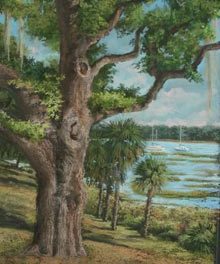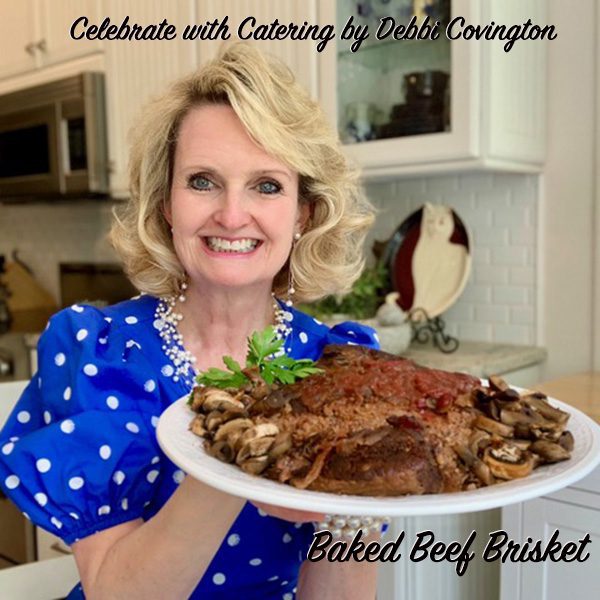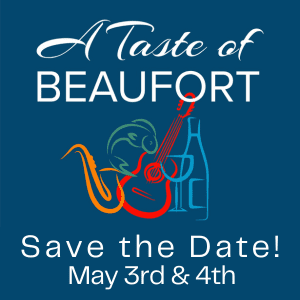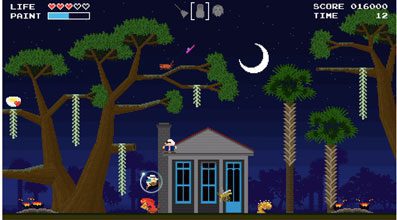 For the past four years, Brian Canada has been moonlighting like crazy. USCB professor by day, after hours he’s been developing and promoting Bugs ‘N Boo Hags, a video game inspired by the South Carolina Lowcountry that’s set to launch in September. A longtime favorite setting for major motion pictures, Beaufort is finally poised to hit the small screen.
For the past four years, Brian Canada has been moonlighting like crazy. USCB professor by day, after hours he’s been developing and promoting Bugs ‘N Boo Hags, a video game inspired by the South Carolina Lowcountry that’s set to launch in September. A longtime favorite setting for major motion pictures, Beaufort is finally poised to hit the small screen.
Just how “Beaufort” is this game? Very.
It’s based on the Gullah folktale of the Boo Hag and involves protecting Lowcountry homes from said hag using haint paint, brooms, salt shakers, and even horseshoe crab shell witchdoctor masks. The main character, Sheriff Jack McCleary, is loosely based on legendary “High Sheriff of the Lowcountry,” Ed McTeer, and Mayor Billy (Keyserling) is your guide through the game. Many levels are based on home designs by Beaufort’s own Allison Ramsey Architects. Some of the levels are based on actual homes, businesses, and historic sites from the area, including the old Beaufort Jail on King Street, the Robert Smalls House, Tidalholm, the abandoned “Pickle Factory” near the Spanish Moss Trail, the St. Helena Chapel of Ease, and even the “Hank’s Lowcountry She Crab Soup” market stall from the Port Royal Farmer’s Market. The “Kazoobie Kazoo” is a power-up item.
The game is currently in the middle of a Kickstarter campaign, and Beaufortonians have a chance to get involved. Those who contribute at the highest tiers will not only be given Executive/Master Producer credit, but they’ll appear in the game as characters and their homes or businesses will be designed as in-game levels. (And, as an extra bonus, they’ll receive limited edition physical artwork and collectibles created by local artists.)
We recently spoke with Brian Canada about his passion project . . .
You’re an associate professor of Computational Science at USCB. Did your childhood love of video games lead you into that field?
 It certainly played a role. When I was very young, my parents brought home a Texas Instruments home computer for Christmas. Sure, I played games on it—I was just a kid, after all—but I eventually learned a bit of the BASIC programming language and wrote some of my own games. Those early efforts were laughably bad, but I had a good time doing it.
It certainly played a role. When I was very young, my parents brought home a Texas Instruments home computer for Christmas. Sure, I played games on it—I was just a kid, after all—but I eventually learned a bit of the BASIC programming language and wrote some of my own games. Those early efforts were laughably bad, but I had a good time doing it.
I kept up with my programming, but I actually didn’t study computer science in college; I ended up pursuing chemical engineering, which at the time seemed like a better use of my interests and aptitudes. After graduation, I took a job with Exxon and joined a team that developed dynamic training simulators, which one could very easily think of as “video games” for training the operators that worked in the control room of a refinery or a chemical plant. After a few years at Exxon, I left to work on my PhD in bioinformatics—essentially the use of computers to solve problems in biology—and received a more proper formal training in computing through a graduate minor in computational science that my university, Penn State, was offering.
After I joined USCB as an assistant professor, I found that creating games and simulations was a great “hook” to get students interested in programming, because it requires you to think about so many aspects of software development—not just the design and programming, but also the human-computer interaction side of things.
Bugs ‘N Boo Hags looks, sounds and feels very old school. You’ve called it a “love letter” to the games you played as a kid. Is there any other reason (besides love) that you decided to go that route?
I’ve long had an affinity for colorful, geometric patterns as part of my general design aesthetic, but there were some very practical reasons for the “old school” appearance of the game. For one thing, 2D “pixel art” is a lot easier for me than creating cartoon-like animations or 3D models. You may have heard of the “uncanny valley” that happens a lot with computer-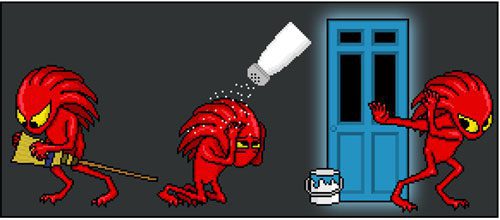 generated 3D animated characters in both movies and video games. The characters look and move realistically, but there’s something about their eyes that still looks horrifyingly wrong and unnatural, and the viewer or player is taken out of the experience as a result. I have much respect for those in the animation industry that are making great strides to eliminate the “uncanny valley,” but I elected to avoid that problem altogether. My game doesn’t really strive for hyper-realism—the characters and scenery resemble their real-world counterparts just enough to keep the players immersed in play.
generated 3D animated characters in both movies and video games. The characters look and move realistically, but there’s something about their eyes that still looks horrifyingly wrong and unnatural, and the viewer or player is taken out of the experience as a result. I have much respect for those in the animation industry that are making great strides to eliminate the “uncanny valley,” but I elected to avoid that problem altogether. My game doesn’t really strive for hyper-realism—the characters and scenery resemble their real-world counterparts just enough to keep the players immersed in play.
Now, that doesn’t mean pixel art is a cakewalk. The engineer and artist sides of my personality constantly butt heads with one another, and for some reason I decided that I would force myself to design each character and object in the game within a 16×16 pixel square “canvas.” Forcing myself to work within such tight constraints scratched my “problem-solving itch,” and I’d spend hours moving pixels around until the character or object looked “just right.” I’ve probably spent as much time and effort fussing with the pixel art as I would have creating 3D models!
Have you tested this “vintage” look on any contemporary kids? How do they respond?
It’s fun to watch players of all ages play the game, but it’s been really interesting to me that younger kids really do like the visual style. Maybe it’s a “what’s old is new” sort of thing, especially with all these “classic” versions of old video game systems being re-issued lately. There’s nothing terribly violent or offensive about those old games, and maybe parents are now showing the games they played as kids to their own kids.
But I think that, at the end of the day, it’s really not about the graphics, but rather the gameplay. If something is fun, you probably couldn’t care less about how it looks. Take Pong, for example—it’s just white squares and rectangles on a black background, but it’s still enormously fun to play, and it’s almost 50 years old. Perhaps creating fun games with “just enough” abstraction triggers something in the player’s brain to fill in the visual gaps—to imagine being in a more visually complex world than what’s on screen.
But there’s more than just a certain “look” that those older games had. They were notoriously difficult, but not so difficult that you hated yourself after playing. Instead, after you lost the game, you’d reach into your pocket for another quarter and try again, and you’d keep trying until you ran out of quarters. I’ve designed Bugs ‘N Boo Hags to hit that same “sweet spot” where the game is hard but makes you want to keep playing, and much of the feedback (especially from kids!) has validated that design objective.
You’ve done all the development work on the game yourself – with help from your sister, who wrote the music. Do you have any other partners on the project?
My girlfriend Candace Brasseur has been my muse, voice of reason, copy editor, and PR person throughout the entire development process. Whenever I go through a phase where I feel like the game is stupid or not deserving of the same level of attention as bigger, fancier games developed by larger, more experienced teams, she’s there to remind me that the game really is a lot of fun and that is has wide appeal.
I’ve also been working with a number of testers (sometimes called “quality assurance specialists” in the industry) who have been kind enough to contribute their time and effort for free, but if the Kickstarter is successful I am planning to use some of the funding to properly compensate them and others for their time.
My sister wrote most of the music, but a couple of years ago, a two-man rock band from 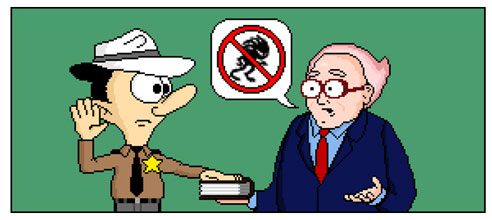 Columbia that happens to be called “Boo Hag” reached out to me through Facebook. After Candace and I met with the band members, dummer Scott E. Tempo and guitarist/singer Saul Seibert, we agreed to partner with them on a cross-promotional event at a bar in Columbia last summer, where Boo Hag and other local bands performed while Bugs ‘N Boo Hagswas projected on the wall. It was a lot of fun and a great way to showcase talent in our state. They said they’d love for their own music to be in the game, and so I worked with my sister to adapt one of their songs as the background music for the game’s introductory cutscenes.
Columbia that happens to be called “Boo Hag” reached out to me through Facebook. After Candace and I met with the band members, dummer Scott E. Tempo and guitarist/singer Saul Seibert, we agreed to partner with them on a cross-promotional event at a bar in Columbia last summer, where Boo Hag and other local bands performed while Bugs ‘N Boo Hagswas projected on the wall. It was a lot of fun and a great way to showcase talent in our state. They said they’d love for their own music to be in the game, and so I worked with my sister to adapt one of their songs as the background music for the game’s introductory cutscenes.
There are several other folks involved with the project as well. Our Kickstarter campaign has a couple of higher-tier pledge levels with “premium” backer rewards. Some of those rewards are digital, such as having the opportunity to have your home or business designed as one of the game’s levels, getting your name listed prominently on the title screen as a “master producer,” or even having me put the backer in the game as a playable character. But it was suggested to me by a consultant that I should also include some collectible physical rewards for our top backers, so I commissioned a prototype Boo Hag “plushie” from local textile artist Rhonda Jordan, along with mixed-media interpretations of the game’s characters on hand-embellished canvas prints by Amiri Farris, whose unique art style and representations of life in the Lowcountry are very well known in our area and beyond. Furthermore, a handful of locals are serving on the project’s advisory board, including Cooter Ramsey of Allison-Ramsey Architects (whose architectural home designs are used as the basis for many of the game’s levels), Victoria Smalls of Penn Center, Inc. and the Gullah-Geechee Cultural Heritage Corridor Commission, as well as Bluffton artists Bernice and Andy Tate. I’d also like to single out Stephen Murray and the folks at Kazoobie Kazoo and New South Shirts—they have been our local source for the “swag” (T-shirts and kazoos) that we use for promoting the game at festivals, conferences, and other public-facing venues. Shelley Barratt, the Beaufort Digital Corridor program manager, has long been a champion of this project and the potential impact on our region that it and related future projects may have on our region. And finally, I would be remiss if I didn’t give a shout out to my students at USCB that I’ve had the pleasure of teaching and mentoring over the past several years—their creativity, hard work, and determination are a constant source of inspiration for me to try to do the best I can at everything, including this project.
You’re in the middle of a Kickstarter campaign. How are people responding so far?
Our campaign launched on June 11th, and it will last for exactly 30 days. As of this interview, we are just under 50% funded after about one week. I’m encouraged that many of the contributions have come from the Beaufort and USCB communities as well as some of my own former USCB students who are now reaping the myriad rewards of their hard work. The fact that we are nearly half-funded shows the campaign has some traction and isn’t dead in the water, but we still have a lot to do. Unlike other “crowdfunding” platforms like Indiegogo or GoFundMe where you get to keep whatever funds you raise, Kickstarter has an “all-or-nothing” funding model, which means that if we don’t meet our funding goal (of just over $7,000) by the time the campaign ends, then we don’t get a dime, and whatever funds have been contributed will be returned to the backers. The all-or-nothing model ensures that we’ve properly planned our budget and that we aren’t just putting an arbitrary goal out there. This type of funding model also promotes a high sense of urgency—for us, that means putting fresh content on social media at least once a day to get prospective backers engaged and interested. We’re doing fairly well, so I’m not panicking yet, but we also aren’t in a position to sit back and be complacent.
 The game will be released even if the Kickstarter campaign isn’t successful, but having the additional cash on hand will really make the game that much better, as we will use a significant portion of the funds to hire K-12 and college students as quality assurance specialists, and I’d like to pay my sister to contribute some more music to the game. But not only will be better in a technical sense—it will also be much more closely tied to our community. Community involvement is very important to this project—I think people will feel proud to play a role in contributing whatever they can to see a video game produced in the Lowcountry see worldwide commercial success. If we can achieve that success, it will help get the attention of other entrepreneurs who will see the Lowcountry as an attractive place where other game companies and tech startups can succeed, and that will help to diversify, grow, and sustain our economy.
The game will be released even if the Kickstarter campaign isn’t successful, but having the additional cash on hand will really make the game that much better, as we will use a significant portion of the funds to hire K-12 and college students as quality assurance specialists, and I’d like to pay my sister to contribute some more music to the game. But not only will be better in a technical sense—it will also be much more closely tied to our community. Community involvement is very important to this project—I think people will feel proud to play a role in contributing whatever they can to see a video game produced in the Lowcountry see worldwide commercial success. If we can achieve that success, it will help get the attention of other entrepreneurs who will see the Lowcountry as an attractive place where other game companies and tech startups can succeed, and that will help to diversify, grow, and sustain our economy.
But we’d also love for folks in our area to view the project as a fun opportunity to include their own business or home as a level in the game, because many of these homes and businesses make the Lowcountry as special it is. And it’ll be fun for both locals and visitors to play the game and recognize places they’ve seen and people they’ve met. In a way, Bugs ‘N Boo Hags is more than a video game; it’s kinda like “virtual tourism”—you can experience the fun and wonder of the Lowcountry from anywhere in the world!
For more information visit www.bugsnboohags.com or www.kickstarter.com/projects/briancanada/bugs-n-boo-hags-a-game-based-on-south-carolina-folklore



